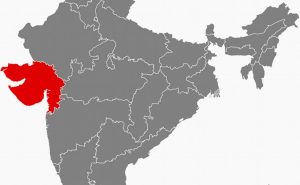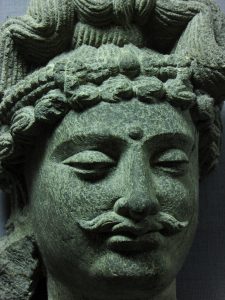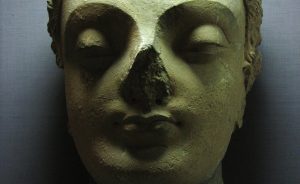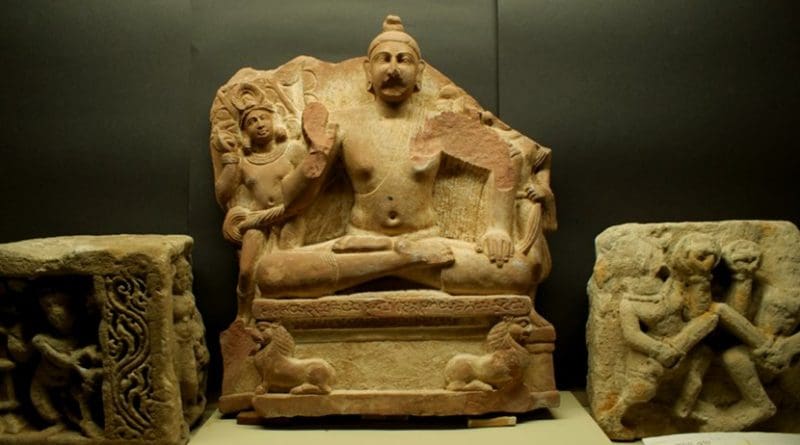India: Gujarat Home To Three Jewels Of The Crown Of Buddhism
Junagadh, Vadnagar and Devni Mori are three jewels of the crown of Buddhism in the western Indian state of Gujarat. Indeed, Gujarat was Buddhist during a large chunk of the historical period.
How did Buddhism arrive in Gujarat? The religion arrived in Gujarat through Emperor Asok’s reign; Gujarat was a part of the Mauryan Empire. Asok had converted to Buddhism after his perilous war on Kalinga. Numerous literary traditions claim that Buddhism reached Gujarat within the lifetime of the Buddha.
Junagadh is famous for its Asokan edicts and for the exquisite Buddhist architecture of Uperkot caves. Vadnagar is an example of historical Indian urbanity and an ancient centre of Buddhism. Devni Mori is the site of a great stupa (a container for holy relics of the Buddha). This stupa had adorned the breathtaking landscape of the Meshvo River, enveloped by the Aravalli hills in northern Gujarat.
The earliest archaeological evidence of Buddhism in Gujarat dates from the Asok period of Girnar rock edicts and Sopara fragments. Buddhism became a popular religion in Gujarat during the Kshtrapa rule between 1st and 4th century AD. . Its popularity peaked in Gujarat during the rule of the Maitraka dynasty (470-788 AD). Hundreds of rock-cut caves have been found in Gujarat. The construction and maintenance of such cave complexes was patronised by wealthy merchant guilds of Gujarat, called shrenis.

Records of the Chinese pilgrims, Hiuen Tsiang, I-Tsing and Huei-Chao have described a thriving Buddhist community in Gujarat. According to Hiuen Tsiang and I-Tsing, the University of Valabhi (near modern Bhavnagar) rivalled that at Nalanda. I-Tsing notes that learned scholars would find it necessary to study at both institutions. Hiuen Tsiang says that Gujarat was divided into several principalities which included hundreds of Buddhists monasteries full of monks.
Huei-Chao, in 755 AD, records a vast and prosperous country where both Mahayana and Hinayana flourished. The Tibetan historian, Taranatha, in his 17th century work– The History of Buddhism in India– notes that art of Gujarat had influenced the art of Pala, Kashmir, and, Nepal.
Gautam Buddha had first preached at Sarnath which was adopted by the Mauryan emperors as their dynastic shrine. The cult of the chaityas was about respecting the sacred spots like groves of trees or a single tree on village outskirts. It was this cult, prevalent prior to the emergence of Buddhism, was adopted by the Mauryans as their own and started building stupas over the ashes of the Buddha. Asok unearthed the ashes of the Buddha from the original resting place and further divided them all over India and built stupas. Devni Mori is one such site of a Buddhist stupa. This stupa, a major fourth century AD Buddhist settlement, was unearthed by the archaeologists, B. Subbarao, R.N. Mehta and S.N. Chowdhury in 1960-63.

Devnimori is 2 kilometers south of Shamalaji, in Sabarkantha district of Gujarat. The area is hilly, and Devnimori sits amidst a breathtaking landscape of the valley formed by the Meshvo River flowing nearby. An important Buddhist monastic centre had thrived here 1600 years ago is not surprising; the place is close to major trade routes to Mewar and Dungarpur.
Trade and trade routes were primarily responsible for spreading Buddhism, both within India and to China and other countries. Indeed, Buddhism was the first religion that travelled on the ‘Silk Road’, carrying the message of ‘World Peace’ from Asok, who had renounced organized war. Of course, there was never only one ‘Silk Route.’ The name is a 19th century invention of a German geographer and has a whiff of intense European colonial rivalries prevalent at the time. The ‘Silk Route’ consisted of land and ocean trade routes criss-crossing a vast area of the ancient world. It wove a magic carpet of a trading mechanism; Rome, Ethiopia, Cambodia, Patliputra and Gujarat were various threads of that magic carpet.
Devnimori, called the Sharira Stupa, contained the holy relics of the Great Teacher. Of the two caskets found here, the first was an unfinished one of schist filled with ash. The second casket, also of schist, had a circular lid and a cylindrical body. It is similar to the casket, found at Gaz Dheri in North West Frontier Province of Pakistan. Both caskets were placed in ceramic pots. Mehta and Chowdhary opine that the monks associated with this stupa belonged to the Sammatiya Hinayana sect of Buddhism.

The inscription on the casket, in Brahmi script, reveals that the contents were the holy relics of the Buddha. It also mentions that the Maha Stupa was built during the reign of king Rudrasena. According to the excavators, the core of the Stupa was never disturbed once built. The inscription also says that two Buddhist monks, Agnivarma and Sudarshana played a prominent role in the planning and construction of this Stupa.
Decorative motifs such as acanthus, laurel and olive leaves, stilted arches, medallions, grotesque face mouldings, all point to the influence of the Indo-Greek Gandhara School of art. The art historian, Sompura, has noted that “the Buddhist terracotta art of Devnimori is delicate, well proportioned and beautiful. The Buddha is shown in padmasana with hands resting on the lap and palms facing upwards. The face is well proportioned and serene with a smile. The nose is straight, eyes half closed and long earlobes”.
Vadnagar (23˚ 48ٰ N; 72˚ 36ٰ E) is located in Mehsana district of Gujarat. Other names of Vadnagar used in the past were: Nagara, Camatkarapura, Anandapura and Vrddhanagar, The town sits on the edge of a large lake called Sarmistha; it is fortified with high walls. Vadnagar was an important centre of trade, connecting North Gujarat to Rajputana, Malwa, Saurashtra and the Deccan.
Hieung Tsang visited Vadnagar in 641 AD and called it Anandapura. He noted 1000 Sammatiya monks in residence at 10 monasteries: “From here, going 700 li we come to O-nan-to-pu-lo (Anandapura or modern Vadnagar). Anandapur is 20 li in circuit, there is no chief ruler and is under Malava. 10 Sangharamanas exist with less than 1000 priests of the Sammatiya School or Little Vehicle.” Vadnagar is a key to the understanding of ‘North Gujarat Settlement Pattern’, and it is an example of how that settlement pattern gave birth to historical Indian town planning.

